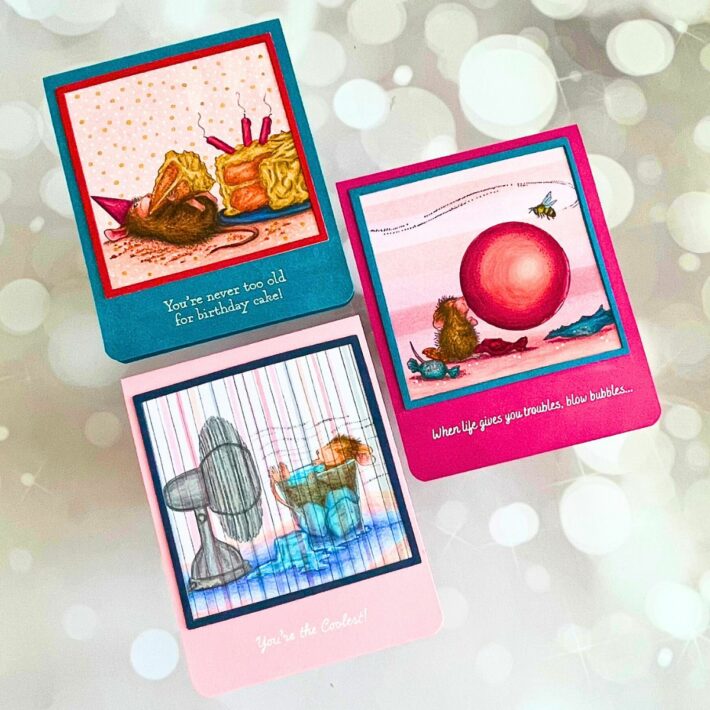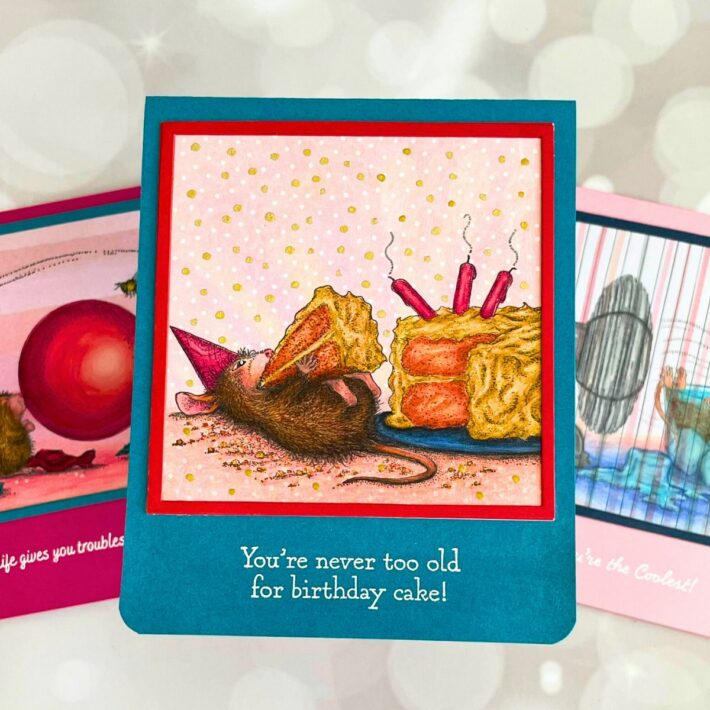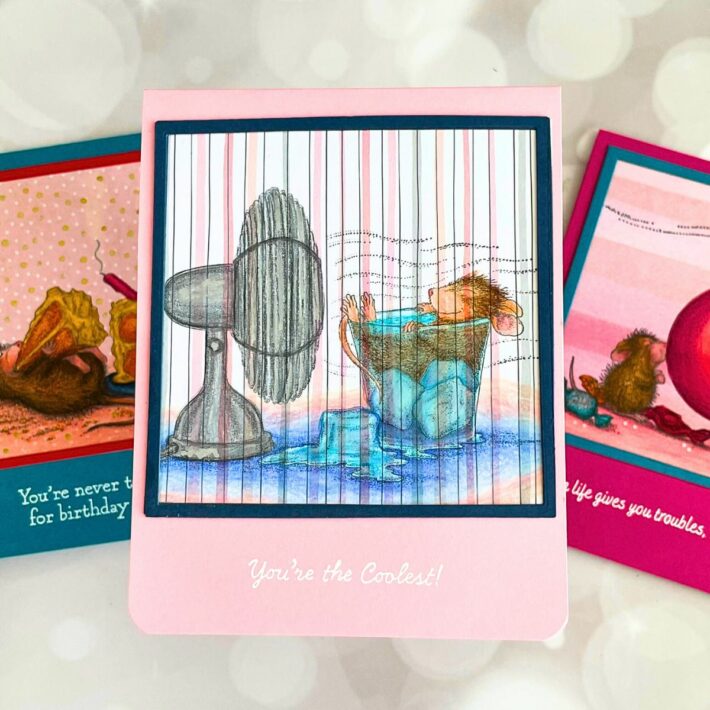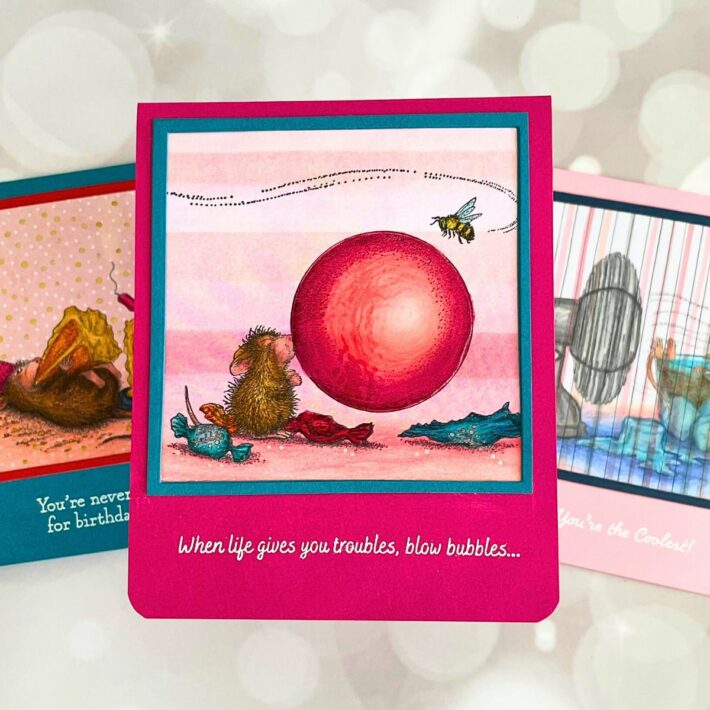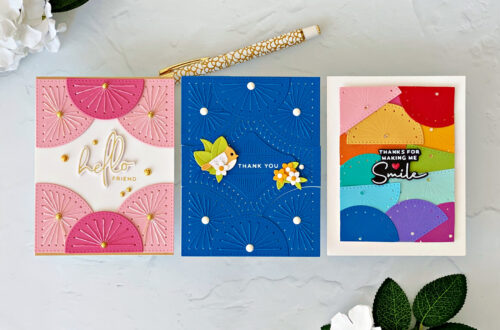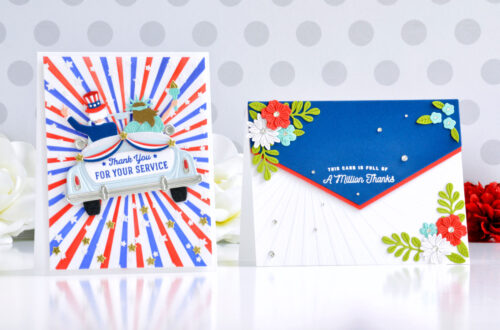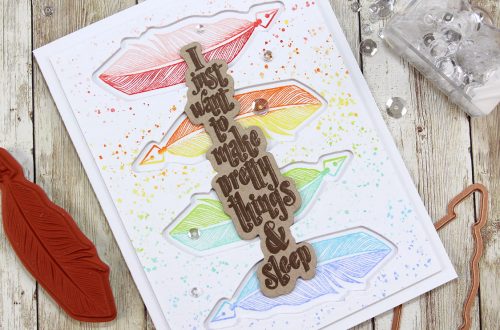
Focus on the Fun of Coloring Without the Background Hassle!
Hello, crafters! Cha Lion here as a guest designer on Spellbinders’ blog! I’m thrilled to be back for another month and excited to share some delightful creations with you. Today, I’m showcasing a series of summer cards using the adorable House-Mouse Summer Fun collection. In my previous post, I discussed how storytelling inspired my coloring and highlighted watercolor techniques focusing on spotlight effects (you can check out that post HERE). This time, however, I’m sharing tips for when you can’t spend a lot of time coloring. You’ll see this approach in the three cards I’ve created for you. I hope you enjoy them as much as I enjoyed making them!
USE PATTERNED PAPER
Please note that this post reflects my personal experience as I’m not an experienced artist. I find relaxation in bringing life to the main focus of the card, particularly the adorable little mice from these cards, while imagining the setting they inhabit. However, there are times when creativity eludes us, and we feel stuck without ideas. Yet, the desire to practice coloring or crafting persists. One effective method for coloring practice is to work on top of patterned paper. This saves you from having to color in the background, making coloring simpler and more enjoyable.
NOTE: Spellbinders’ quick and easy card kits include a plenty of patterned papers perfect for this technique. I handpicked several sheets from one of their kits, and let me tell you, they’re absolutely gorgeous!
COLORING MEDIUM
Selecting the appropriate coloring medium isn’t always straightforward, as it heavily depends on your choice of paper. Patterned papers, in particular, are typically thinner compared to cardmaking cardstock or watercolor paper. This makes them less suitable for mediums involving water or heavy consistency. However, there are exceptions. Pigmented colored pencils, for instance, can work effectively on patterned paper. It’s crucial to ensure that the colors used on patterned paper are sufficiently pigmented; otherwise, they may not stand out well against the existing design behind them. Mediums like Karin Brushmarkers can work on light-patterned paper as they are not pigmented. These markers can be applied directly without adding water to adjust color intensity, allowing you to create vibrant stains of color.
TIP: If you’re uncertain about which medium to choose, experiment with different options on a single piece of patterned paper. This way, you can test their compatibility and decide which one works best for your project!
HOW I COLORED CARDS USING PATTERNED PAPER
To create these cards, you can follow these steps:
STEP 1. Choose a single piece of patterned paper for each card.
STEP 2. Stamp each image onto the patterned paper using black permanent ink or colored ink if preferred. Use a stamping tool to ensure crisp lines and avoid removing the stamps from it to restamp for enhanced clarity.
TIP: I highly recommend stamping with Archival Jet Black ink because it works really nice with pigmented colored pencils.
STEP 3. Color each card using your selected medium. In this post, I used pigment-colored pencils.
TIP: Start by coloring from the lightest to the darkest areas. Do not discard your project as soon as you make a mistake; try to fix it by adding another color on top or just add white or black to darker or soften the color.
STEP 4. Restamp the images of the summer mice to emphasize the outlines, enhancing their visibility against the patterned paper background.
TIP: A stamping tool is a valuable asset in this case, as it keeps the paper in place, preventing it from shifting while you stamp over the image again.
STEP 5. Die-cut each card into a square shape to resemble a Polaroid photo. Use different colored cardstock pieces for the card bases, such as pink, teal and rose, and add a white piece inside for writing the message.
NOTE: If you need one guillotine, consider the one offered by Spellbinders and the New and Improved Platinum Six Machine for die cutting.
STEP 6. Emboss the phrases using white embossing powder.
TIP: Prevent embossing powder from sticking to other parts of the cardstock by using an anti-static powder tool.
STEP 7. Round the corners of the card bases using the Corner and Notch Punch by Spellbinders.
STEP 8. To add a polished finishing touch, I die-cut some square frames to layer around the images. However, feel free to skip this step if desired!
TIP: Create the frame by using two square dies from Everlasting Squares Etched Dies.
CARD DETAILS
Attention to card details is essential for giving your creations a professional touch. For these particular cards, I used the Spellbinders Glaze and Glue to add dimension to certain elements of the images, such as the chewing gum bubble, the candles, the water in the glass, and the noses of each mouse. Additionally, I used metallic pens to add gold and silver intricate details to the images. For example, I added gold dots to one of the backgrounds and silver lines atop the fan and candy wraps.
TIP: When using Spellbinders Glaze and Glue, I highly recommend transferring it into a bottle with a fine tip for precise application, especially in smaller areas.
GET CREATIVE!
Aren’t these mice just adorable? Now it’s your turn to join in the fun! Take a dive into your stash of forgotten patterned papers, grab your favorite mice stamps, and bring them to life with your preferred coloring medium, using the tips I shared earlier. Ready to unleash your creativity? Dive in and share your creations with us! Happy coloring!
Spellbinders Supplies:


